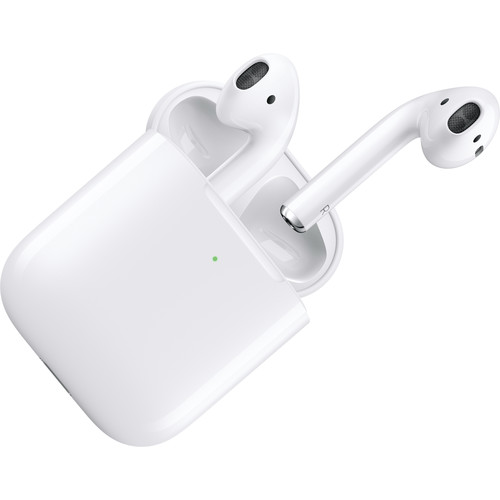There has been a progression of the familiar stock earbuds/in-ear headphones; from having a wire connecting them to the device through a 3.5mm headphone jack, to having a wire that connects the earbuds but not the device, to having just earbuds with no wires connecting the both of them to anything at all.
“True Wireless” are earbuds that have nothing tethering the earbuds together, only a wireless connection.
History
A little history behind the rise of true wireless earbuds begins with Apple’s unveiling of the iPhone 7 back in 2016 as part of their yearly upgrade cycle. This iPhone made waves by being the first in a popular phone line to omit the 3.5mm headphone jack, a move which would be criticized and mocked by many in the following years, including some other OEM’s – original equipment manufacturer (many of whom have actually gone on to remove the jack themselves not long after they mocked Apple for it, notable examples being Google and OnePlus). Its most significant effect was probably the surge in wireless headphone and earbud production and use that it spurred among consumers as well as companies.
Then the “AirPods” were unveiled. These were basically the stock Apple in-ear headphones, originally called “EarPods”, but with no wires in between them and a slightly increased size. They were to come in a small charging case which could recharge them multiple additional times after their 5-hour battery life for listening (and 3 hours for talk-time) ran out for a total of about 24 hours.
They were revealed alongside the iPhone 7 in which their advanced connectivity to Apple devices via their proprietary “W1” chip was a point of focus. It can detect the headphones as soon as their case is opened without going into the Bluetooth settings menu of an iPhone, iPad, or Mac produced after that point. And once it’s paired to one of your Apple devices, it’s paired on all devices connected to your iCloud account so you don’t have to repeat the process if all your other devices are within this ecosystem. It enhanced the allure of the Apple ecosystem a great deal with its massive convenience factor.
AirPods
Fast-forward to the present day. AirPods were not as well-received due to their entry price of about $150 and the fact that they’re so small and could be lost rather easily. However, they’re the most popular true wireless earbuds on the market.
Since then the true wireless earbud market has absolutely exploded with options ranging from cheaper than AirPods (double digit prices) to far more expensive, and many other headphone making companies have tried to get their slice of the pie in this market, including the likes of Bose, Sennheiser, Sony, Audio-Technica, Samsung, and many other names familiar and unfamiliar (such as Apple’s subsidiary company, Beats, recently did with their very first entry to the market, the Powerbeats Pro), each with something in particular to offer and some with better results than others, but AirPods (and as of recently, their “H1” chip successor, the AirPods 2) remain the best-selling true wireless earbuds.
Varieties to the AirPod
Examples of True Wireless earbuds aside from the aforementioned AirPods include the Samsung Galaxy Buds, the Bose Soundsport Free, the Jabra Elite 65t’s, the Sennheiser Momentum True Wireless, the Bang & Olufsen Beoplay E8, and many more. As mentioned before, there’s budget and premium options with plenty of variety from workout to casual purposes that will satisfy the needs of those who know what to look for in this market.
However, the most impressive aspect of this product category is the sheer amount of technology that companies are able to pack into them without having a wired connection between the two.
Apple is a very detailed example of this, putting accelerometers, a nano chip with impressive functionality benefits enjoyed by iOS users, a battery that lasts a decent period of time for earbuds, sensors that detect whether they’re in the ear or not, and much more as well as a carrying case that also charges them a specific number of times. Many others have tried to fit as much technology into them as they can as well, to varying degrees of success. Certain true wireless earbuds operate via a master and slave system where the right earbud is typically the former that controls the whole connection and can thus be used on its own while the left earbud doesn’t and can’t be used the same way. This also affects calls where only one side can be heard. By contrast, there are those which feature both earbuds being usable individually and audio can be heard from both sides in all situations.
In closing, the market for True Wireless earbuds is filled with many entries that were basically a response to the success of the AirPods which brought it to life in the first place. There’s a lot of potential for just how much more technology can be crammed into such a tiny package, as well as more power. You just need to know what you want in a true wireless earbud, and where to find it.

